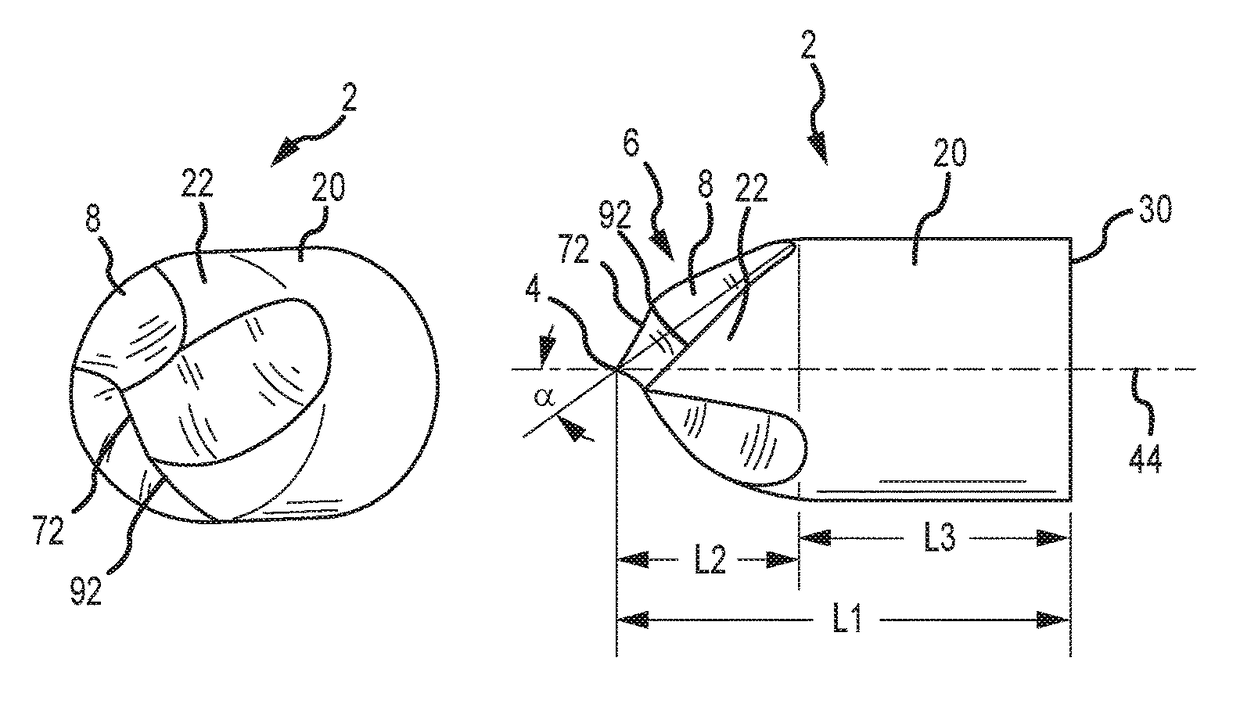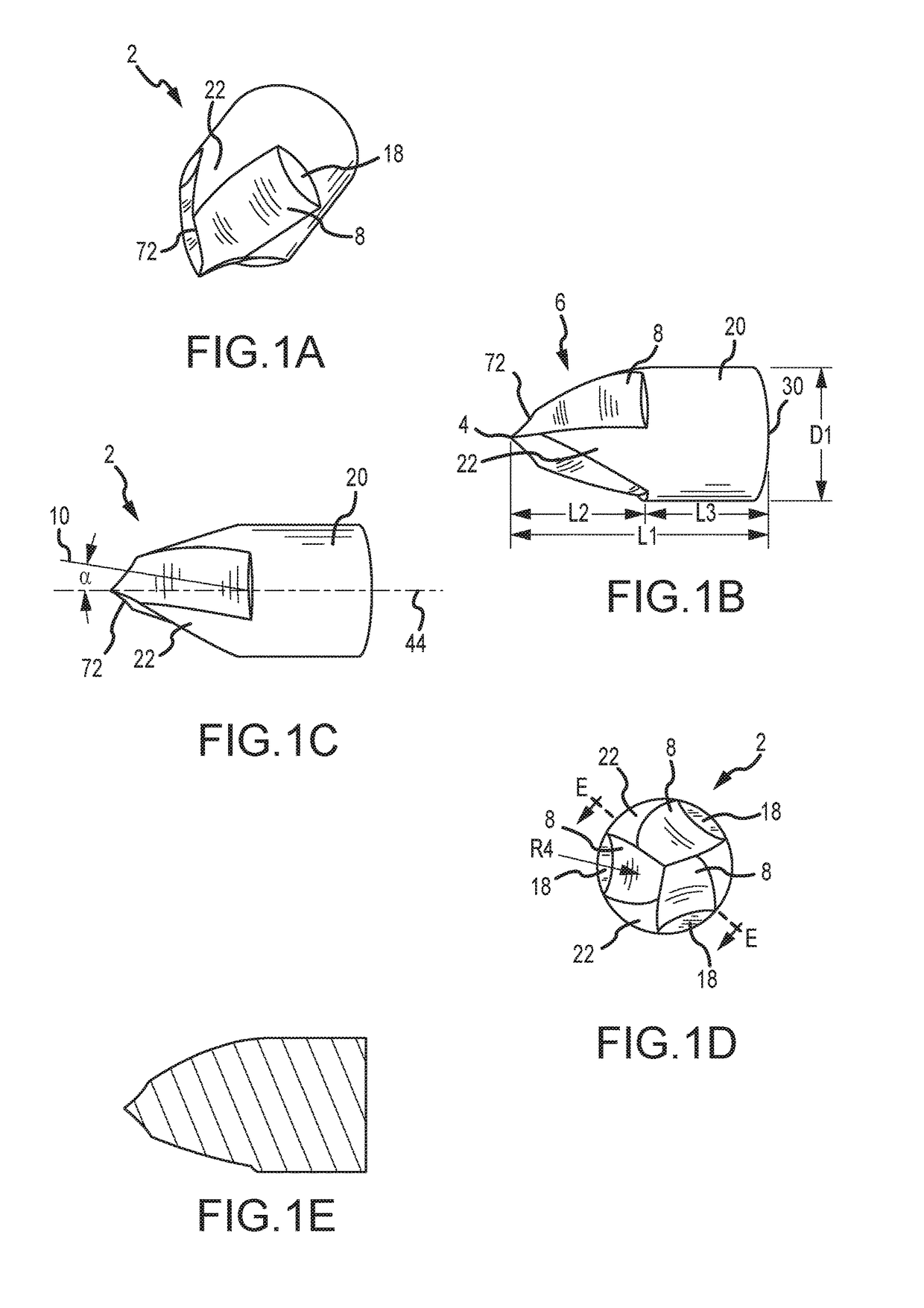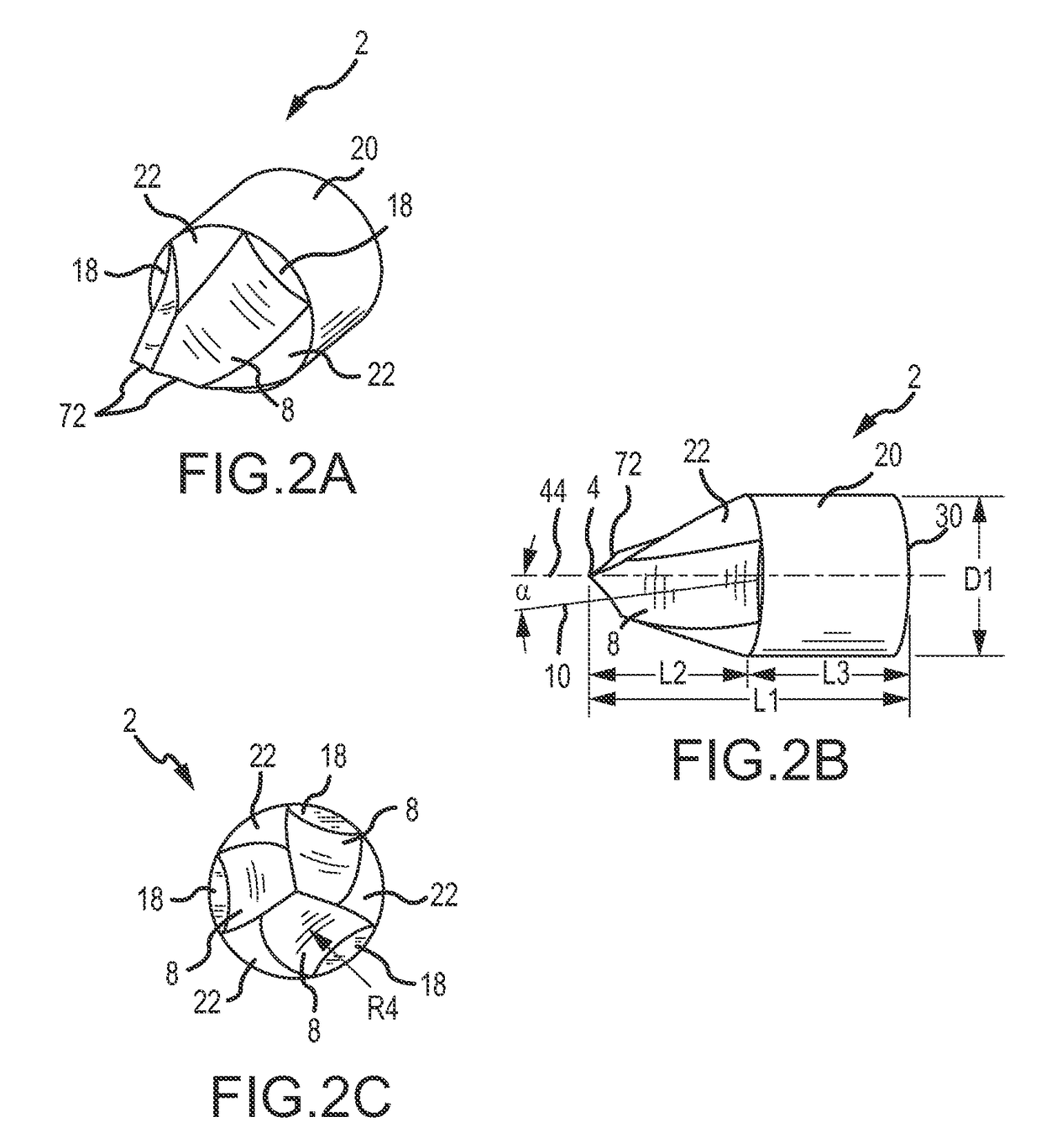Projectile with enhanced ballistics
a projectile and enhanced technology, applied in the field of projectile devices, can solve the problems of reducing reducing the accuracy and velocity of targets, and reducing the accuracy of targets, so as to improve the penetration rate of targets, enhance the spin of bullets in flight, and improve the effect of external ballistics
- Summary
- Abstract
- Description
- Claims
- Application Information
AI Technical Summary
Benefits of technology
Problems solved by technology
Method used
Image
Examples
first embodiment
[0095]FIGS. 1A-E show a projectile 2 according to a FIG. 1A is a perspective view of the projectile 2. FIG. 1B is a side elevation view of the projectile 2. FIG. 1C is another side elevation view of the projectile 2. FIG. 1D is a top plan view of the projectile 2. FIG. 1E is a cross-sectional view of the projectile 2 taken along cut E-E of FIG. 1D. Note that FIGS. 1A-C are to scale.
[0096]The projectile 2 is for pistols and comprises a tip 4 on one end opposite a base 30 on the other end. The projectile 2 comprises a nose portion 6 and a cylindrical portion 20 (also called a shank). The nose portion 6 includes nose depressions 8 (also called cutouts or troughs) and nose remaining portions 22 (also called non-distorted portions or uncut portions) between two nose depressions 8. The remaining portions 22 are the uncut portions having the projectile's original ogive. The remaining portions 22 have a generally triangular shape with the tip of the triangle positioned proximate to the tip...
second embodiment
[0099]FIGS. 2A-C show a projectile according to the invention. This projectile is similar to the projectile of FIG. 1, except that this projectile 2 is two pieces: a nose portion 6 insert that is compression fit into a cylindrical portion 20 housing. Each piece may be a different material in one embodiment. For example, the nose portion 6 insert is made of steel and the cylindrical portion 20 housing is made of brass. However, the projectile 2 can be made of any projectile or bullet material, such as any metal alloy, brass, steel, tungsten, polymers, ceramics, aluminum, Inconel, or any other material known in the art. FIG. 2A is a perspective view of the projectile 2. FIG. 2B is a side elevation view of the projectile 2. FIG. 2C is a top plan view of the projectile 2. Note that FIGS. 2A-C are to scale.
[0100]The projectile 2 comprises a tip 4 on one end opposite a base 30 on the other end. The projectile 2 comprises a nose portion 6 and a cylindrical portion 20. The nose portion 6 in...
third embodiment
[0104]FIGS. 3A-E show a projectile 2 according to the invention. FIG. 3A is a perspective view of the projectile 2. FIG. 3B is a side elevation view of the projectile 2. FIG. 3C is a top plan view of the projectile 2. FIG. 3D is a cross section of the projectile 2 taken along cut D-D in FIG. 3C. FIG. 3E is an enlarged view of a portion of the projectile 2 shown in FIG. 3B. Note that FIGS. 3A-3D are to scale.
[0105]The projectile 2 comprises a tip 4 on one end opposite a base 30 on the other end. The projectile 2 comprises a nose portion 6 proximate the tip 4 on one end and interconnected to a cylindrical portion 20 on the other end. The cylindrical portion 20 is interconnected to a boat tail 38 on the end opposite the nose. The boat tail 38 terminates in the base 30 with a radius of curvature R8 between the boat tail 38 and the base 30. In alternate embodiments, the driving bands 26A vary in number, comprising one driving band 26A, a plurality of driving bands 26A, two driving bands ...
PUM
 Login to View More
Login to View More Abstract
Description
Claims
Application Information
 Login to View More
Login to View More - R&D
- Intellectual Property
- Life Sciences
- Materials
- Tech Scout
- Unparalleled Data Quality
- Higher Quality Content
- 60% Fewer Hallucinations
Browse by: Latest US Patents, China's latest patents, Technical Efficacy Thesaurus, Application Domain, Technology Topic, Popular Technical Reports.
© 2025 PatSnap. All rights reserved.Legal|Privacy policy|Modern Slavery Act Transparency Statement|Sitemap|About US| Contact US: help@patsnap.com



